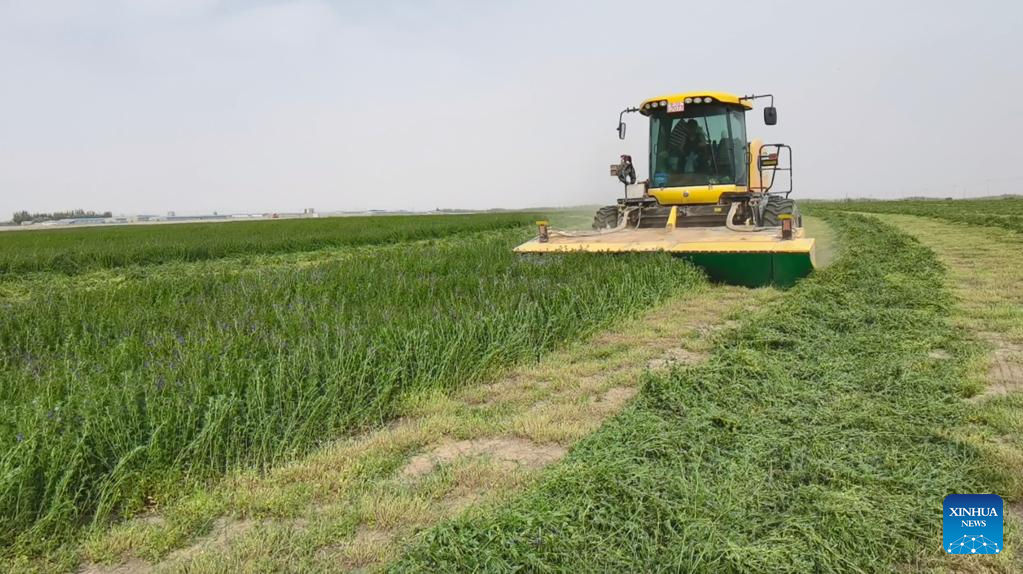
This photo taken on May 23, 2023 shows an agricultural machine harvesting at a "desert soilization" base in Hotan Prefecture, northwest China's Xinjiang Uygur Autonomous Region.(Xinhua)
CHONGQING, June 17 (Xinhua) -- Were it not for the wind-blown grains of sand stinging his body, Wang Zhixiang might easily forget that he is farming in the Taklimakan Desert, the largest desert in China and one of the driest regions in the world.
The harsh conditions in the Taklimakan, which is deep within Xinjiang Uygur Autonomous Region, make farming in the desert impractical, so locals have traditionally relied on food supplies from other provinces.
However, Wang and his colleagues from Chongqing Jiaotong University want to reverse this situation. Using an innovative technique called "desert soilization", they have turned barren desert sands into productive, farmable land at an affordable cost.
They have patented a process to mix a paste made of plant cellulose with sand and apply it to the desert surface, giving it the same properties as soil -- with the same capacity to sustain water, air and fertilizer.
The paste was developed in 2013 by Professor Yi Zhijian and his team after years of research. Yi is a scientist specializing in the mechanics of particulate matter at the university in Chongqing, which is a mountainous city with extensive forest coverage, very different from the desert landscape.
"Every time I thought about this discovery that can convert sand into soil, I became too excited to sleep," the 59-year-old said, recalling the period when the invention was first made public.
In 2016 in the Ulan Buh Desert in Inner Mongolia, a sandy plot twice the size of a football pitch was treated with the new method and thus transformed into fertile land, yielding rice, corn, tomatoes, watermelons and sunflowers.
The scientist found that the test plot required less water but bore higher yields than untreated plots of land.
Thereafter, the technology was tested in multiple locations using larger-scale planting experiments. The cost of applying the treatment was between 29,850 yuan and 44,776 yuan (4,189 to 6,283 U.S. dollars) per hectare, which is within the budget of most growers, Yi said.
These successful trials enabled the team to win over skeptics and receive international accolades, including the Earthshot Prize 2022, an environmental prize founded by the United Kingdom's Prince William, for their efforts to protect and restore nature.
With countries around the world marking World Day to Combat Desertification and Drought on June 17, the desert soilization technology has come under the spotlight once again. Yi's story is a fine example of China's ongoing efforts to employ innovation to curb desert expansion and protect the global ecological environment. ■

This photo taken on June 2, 2023 shows an agricultural machine working to prepare for crop planting at a "desert soilization" base in Alxa League, north China's Inner Mongolia Autonomous Region.(Xinhua)



